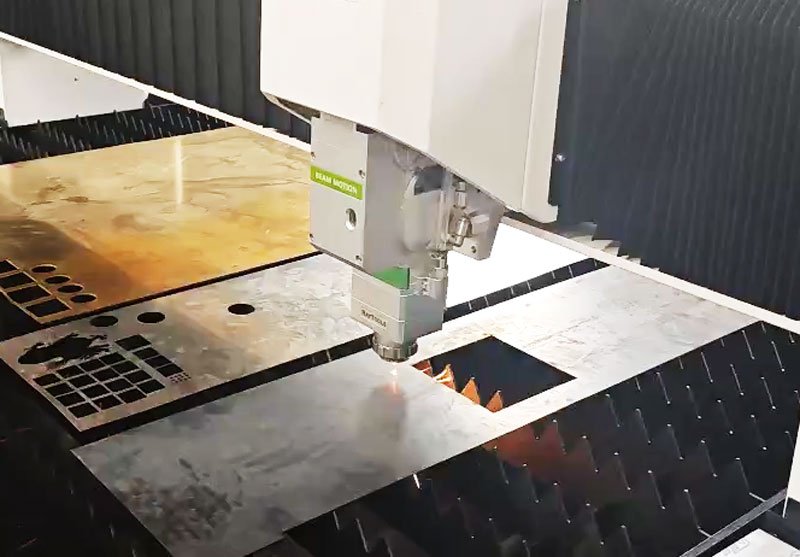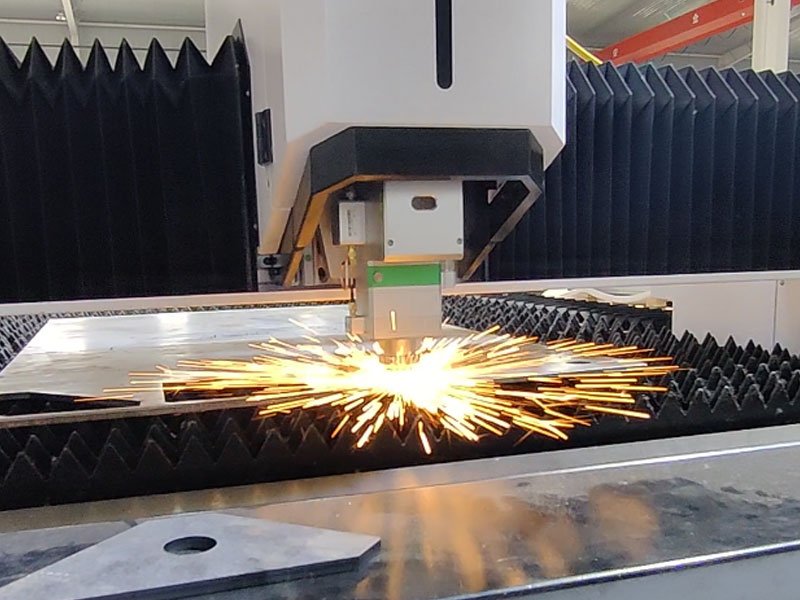In today’s competitive manufacturing landscape, laser metal cutting machines have become indispensable tools for businesses looking to enhance precision, speed, and efficiency in their operations. However, one of the most crucial factors in deciding whether to invest in this technology is understanding the true cost of a laser metal cutting machine.
This comprehensive guide will delve into the various aspects of laser metal cutting machine costs, helping you make an informed decision for your business.
Initial Purchase Price: More Than Just a Number
When considering the laser sheet metal cutting machine cost, the first figure that comes to mind is usually the initial purchase price. However, this is just the tip of the iceberg. The price of laser cutting machines can vary widely, typically ranging from $100,000 to over $1,000,000, depending on several factors:
- Power Output: Higher wattage machines generally cost more but offer increased cutting capabilities.
- Cutting Area: Larger cutting beds allow for bigger workpieces but come at a premium.
- Technology Type: Fiber, CO2, and other laser types have different price points.
- Brand and Origin: Well-known brands and machines from certain countries may command higher prices.
- Additional Features: Automation, advanced software, and other extras can significantly increase the cost.

Hidden Costs: What Lies Beneath the Surface
Beyond the sticker price, several hidden costs can impact your total investment:
1. Installation and Setup
Professional installation is crucial for optimal performance and safety. Costs can include:
- Site preparation
- Electrical work
- Ventilation systems
- Training for operators
These expenses can add 5-15% to the initial machine cost.
2. Operating Costs
Daily operation expenses include:
- Electricity: High-powered lasers consume significant energy.
- Assist Gases: Nitrogen, oxygen, or compressed air are essential for the cutting process.
- Maintenance: Regular servicing and replacement of consumables.
Operating costs can range from $20 to $50 per hour, depending on machine size and usage.
3. Consumables and Spare Parts
Regular replacement of:
- Laser nozzles
- Focus lenses
- Protective windows
- Filters
These can cost between $5,000 to $15,000 annually, depending on usage.
4. Software and Upgrades
CAD/CAM software licenses and regular updates are essential for:
- Designing parts
- Optimizing cutting paths
- Ensuring compatibility with new materials and techniques
Expect to spend $2,000 to $10,000 initially, with annual fees for updates.

Factors Affecting Long-term Costs
Several factors can influence the long-term cost-effectiveness of your laser cutting machine:
1. Material Types and Thicknesses
Different materials require varying laser power and assist gases:
- Mild steel is generally cheaper to cut than stainless steel or aluminum.
- Thicker materials require more powerful (and expensive) machines.
Consider your typical workload when choosing a machine to balance capability and cost.
2. Production Volume
Higher production volumes can lead to:
- Increased consumable usage
- More frequent maintenance
- Higher energy costs
However, economies of scale often result in lower per-unit costs for high-volume production.
3. Operator Skill Level
Well-trained operators can:
- Reduce material waste
- Optimize cutting parameters
- Minimize downtime
Investing in training can significantly reduce long-term operating costs.
4. Maintenance Practices
Regular maintenance is crucial for:
- Preventing unexpected breakdowns
- Extending machine lifespan
- Ensuring consistent cut quality
Proper maintenance can save thousands in repair costs and lost production time.

Cost Comparison: Laser Cutting vs. Traditional Methods
Laser Cutting vs. Plasma Cutting
- Initial Cost: Laser cutting machines are generally more expensive.
- Operating Cost: Laser cutting often has lower operating costs due to higher precision and less post-processing.
- Material Waste: Laser cutting produces less waste, saving on material costs.
- Versatility: Laser cutting can handle a wider range of materials and thicknesses.
Laser Cutting vs. Waterjet Cutting
- Initial Cost: Comparable, with high-end machines in both categories.
- Operating Cost: Laser cutting typically has lower operating costs.
- Speed: Laser cutting is generally faster, especially for thinner materials.
- Maintenance: Waterjet cutting often requires more frequent maintenance.
Return on Investment (ROI): Justifying the Cost
While the initial investment in a laser cutting machine can be substantial, the potential ROI is significant:
- Increased Productivity: Faster cutting speeds and less setup time can boost output.
- Improved Quality: Precise cuts reduce rework and scrap.
- Versatility: The ability to cut various materials opens new market opportunities.
- Reduced Labor Costs: Automation features can decrease reliance on manual labor.
- Energy Efficiency: Modern laser cutters are more energy-efficient than older cutting methods.
To calculate ROI, consider:
- Increased production capacity
- Reduced material waste
- Labor savings
- New business opportunities
Many businesses report ROI within 2-5 years, depending on usage and market conditions.

Cost-Saving Strategies for Laser Cutting Operations
To maximize the value of your investment, consider these cost-saving strategies:
- Optimize Nesting: Efficient part layout minimizes material waste.
- Regular Maintenance: Preventive maintenance reduces costly breakdowns.
- Energy Management: Use power-saving modes and optimize cutting parameters.
- Multi-Shift Operation: Maximize machine utilization to spread fixed costs.
- Operator Training: Well-trained staff can significantly improve efficiency.
- Material Selection: Choose appropriate materials for each job to balance cost and quality.
Financing Options: Making the Investment Manageable
Given the significant upfront cost, various financing options are available:
- Leasing: Allows for lower initial costs and potential tax benefits.
- Equipment Loans: Specialized loans for machinery purchases.
- Vendor Financing: Many manufacturers offer financing programs.
- Government Grants: Some regions offer grants for manufacturing technology upgrades.
Each option has pros and cons, so consult with a financial advisor to determine the best approach for your business.
Future-Proofing Your Investment
When considering the cost of a laser cutting machine, think about future needs:
- Scalability: Choose a machine that can handle potential increases in production.
- Upgradability: Look for machines with options for future upgrades.
- Technology Trends: Consider emerging technologies like automated material handling.
- Market Demands: Anticipate changes in material types or thicknesses you might need to cut.

Conclusion: Balancing Cost and Value
The cost of a laser metal cutting machine extends far beyond the initial purchase price. By considering all aspects – from hidden costs to long-term savings and ROI – you can make a well-informed decision that aligns with your business goals and financial capabilities.
Remember, the cheapest option isn’t always the most cost-effective in the long run. Focus on value: the balance between cost, quality, productivity, and future-proofing your investment. With careful consideration and strategic planning, a laser metal cutting machine can be a transformative investment for your business, driving efficiency, quality, and competitiveness in today’s dynamic manufacturing landscape.
By thoroughly understanding the true cost of laser metal cutting machines, you’re better equipped to make a decision that will benefit your business for years to come. Whether you’re looking to upgrade existing equipment or entering the world of laser cutting for the first time, this comprehensive cost analysis will guide you towards a choice that maximizes value and minimizes unexpected expenses.
